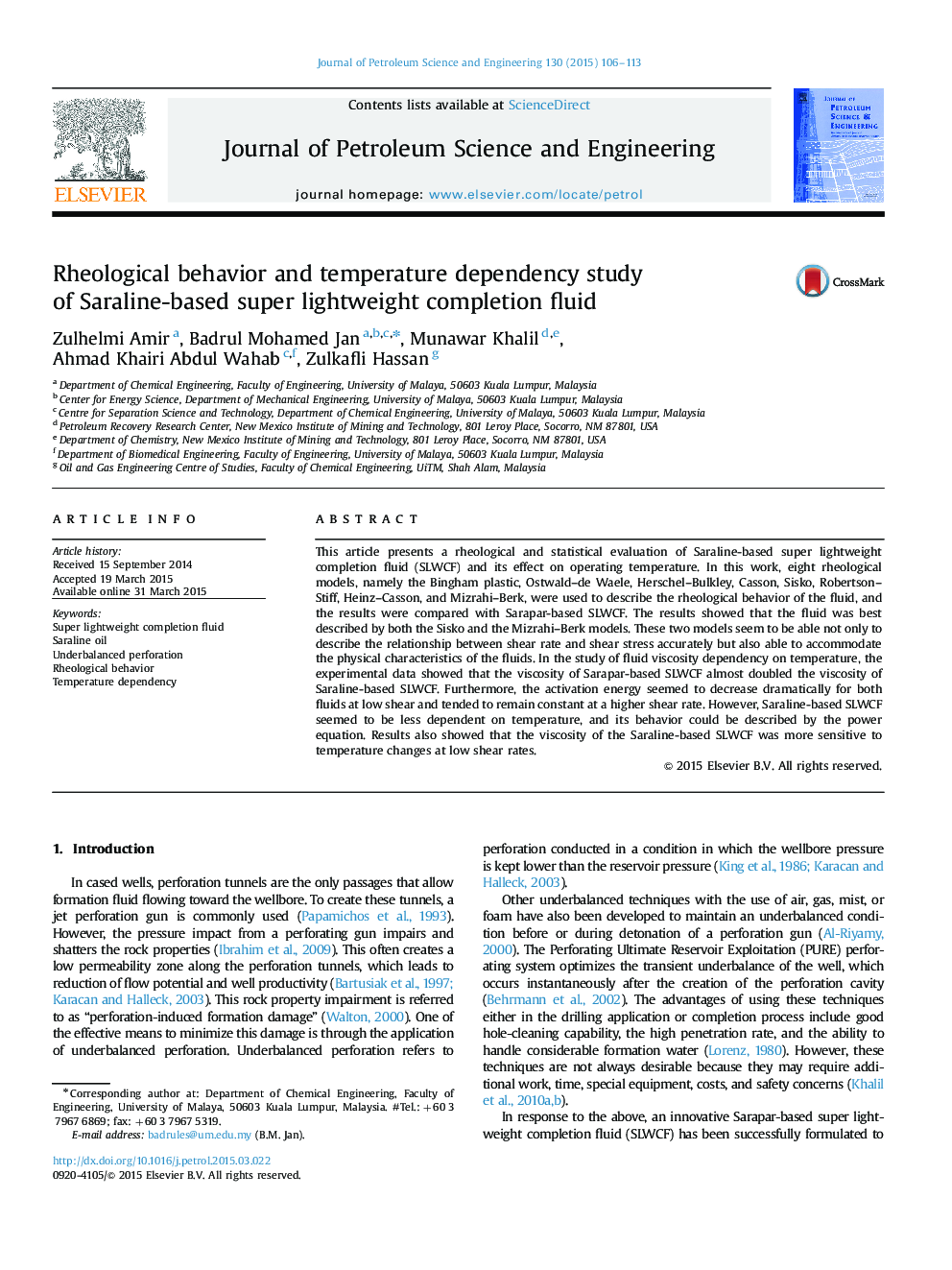| Article ID | Journal | Published Year | Pages | File Type |
|---|---|---|---|---|
| 1754985 | Journal of Petroleum Science and Engineering | 2015 | 8 Pages |
•Rheological evaluation of Saraline-based SLWCF and its effect on temperature.•Result showed that the fluid is best described by both the Sisko and Mizrahi–Berk models.•Saraline-based SLWCF is slightly dependent on temperature compared to Sarapar-based SLWCF.•Activation energy of Saraline-based SLWCF is higher than Sarapar-based SLWCF regardless of shear rate values.
This article presents a rheological and statistical evaluation of Saraline-based super lightweight completion fluid (SLWCF) and its effect on operating temperature. In this work, eight rheological models, namely the Bingham plastic, Ostwald–de Waele, Herschel–Bulkley, Casson, Sisko, Robertson–Stiff, Heinz–Casson, and Mizrahi–Berk, were used to describe the rheological behavior of the fluid, and the results were compared with Sarapar-based SLWCF. The results showed that the fluid was best described by both the Sisko and the Mizrahi–Berk models. These two models seem to be able not only to describe the relationship between shear rate and shear stress accurately but also able to accommodate the physical characteristics of the fluids. In the study of fluid viscosity dependency on temperature, the experimental data showed that the viscosity of Sarapar-based SLWCF almost doubled the viscosity of Saraline-based SLWCF. Furthermore, the activation energy seemed to decrease dramatically for both fluids at low shear and tended to remain constant at a higher shear rate. However, Saraline-based SLWCF seemed to be less dependent on temperature, and its behavior could be described by the power equation. Results also showed that the viscosity of the Saraline-based SLWCF was more sensitive to temperature changes at low shear rates.
